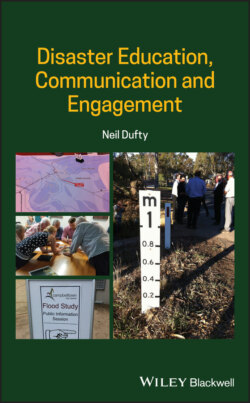Читать книгу Disaster Education, Communication and Engagement - Neil Dufty - Страница 18
2.2.2.2 Response
ОглавлениеAfter the immediate impact of a hazard event, there are multiple groups requiring information including those impacted (e.g. information about evacuation centres, loved ones such as family), those that could become at risk (e.g. drive into a flooded area), and those not impacted wishing to obtain news of the event. According to Wein et al. (2016), ‘messages need to be designed for a range of population preferences for type of information, mindful of various psychological states that affect how such information is processed, retained, and acted upon’.
During a disaster, individuals turn to a large diversity of information sources as they try to decrease their uncertainty and determine which actions to take (Hodgson 2007). Several studies have found indications that those who feel more at risk seek information more actively than those at less risk. In response to chaotic and uncertain conditions, evacuated members of the public more actively and aggressively search for information and can at times be more critical of the information they find (McCaffrey et al. 2013). Spence et al. (2007) found differences in the information desired and information-seeking behaviour of the disabled and non-disabled.
As for risk communication, trust appears critical during an emergency or disaster. A key element that may shape receiver response to an information source is how useful or trustworthy that source is seen to be. The receiver must have confidence not only in the content of the message itself, but also in the source. Key characteristics related to information delivered during a crisis event include crafting honest, trustworthy messages and leveraging credible sources (Seeger 2006).
